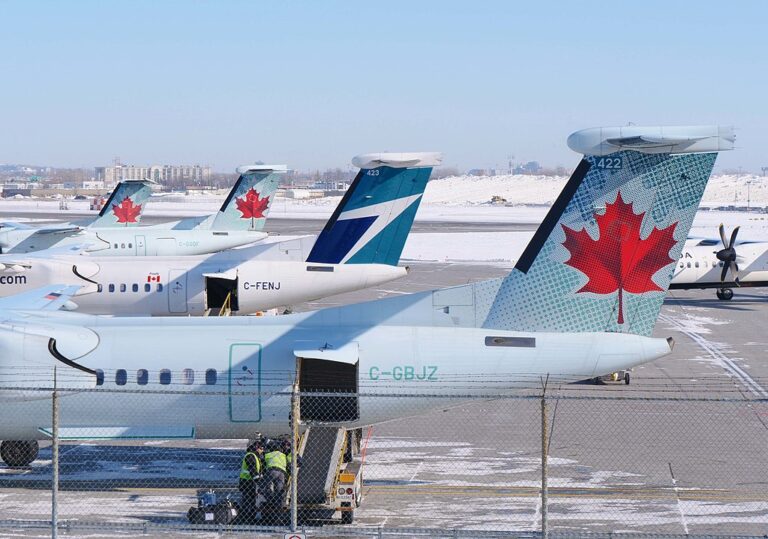
In March 2025, Canada’s aviation landscape experienced significant shifts as heightened competition between major carriers spurred performance gains and reshaped market dynamics. The airline industry, grappling with post-pandemic recovery and shifting consumer preferences, saw several key players not only expand their services but also enhance operational efficiency to capture a greater share of both domestic and international markets.
Throughout March, Canada’s largest carriers—Air Canada, WestJet, and smaller players like Porter Airlines—engaged in fierce competition to attract travelers. This rivalry was especially pronounced on high-demand routes such as Toronto to Vancouver and Montreal to Calgary. The increased competition led to more frequent flights, lower airfares, and additional perks for passengers, resulting in a boost in overall travel numbers.
Air Canada, the nation’s flagship carrier, was quick to respond to the growing demand for travel, ramping up its capacity by introducing new flights and upgrading its fleet. This expansion aimed at improving on-time performance and increasing customer satisfaction. The airline’s strategic focus on international destinations also helped cement its position as a key player in the transatlantic market.
WestJet, known for its competitive pricing strategy, offered aggressive fare discounts on both domestic and U.S. routes. In March, WestJet introduced new nonstop flights to key American cities, challenging Air Canada’s dominance on these routes. This move allowed WestJet to not only boost its market share but also strengthen its brand presence as a budget-friendly alternative to traditional carriers.
Meanwhile, Porter Airlines, which had long served as a regional airline in Ontario, made waves in the industry by announcing its expansion to new cities, including some international destinations. By offering competitive fares and a more streamlined, boutique flying experience, Porter positioned itself as a nimble challenger to the larger carriers. This shift toward broader network coverage was seen as a direct response to the tightening competition.
For consumers, March was a month of increased value, as competition between airlines led to a wider range of flight options and more attractive pricing. Passengers benefited from enhanced loyalty programs, better seat selection policies, and upgraded in-flight services. The increased competition also forced airlines to focus on reducing delays and improving the overall travel experience, with customer service and operational reliability becoming major focal points for all airlines involved.
In addition, the expansion of route networks meant travelers had access to more direct flights than ever before, shortening travel times and increasing convenience. The result was an uptick in bookings, particularly among leisure travelers, who were taking advantage of cheaper airfares and more flexible flight schedules.
As the Canadian airline industry continues to recover from the effects of COVID-19, the competition seen in March is a positive indicator of a more resilient sector. After years of pandemic-driven declines, the industry has been grappling with rising fuel costs, labor shortages, and infrastructure challenges. However, the March performance highlights how increased competition can help stimulate growth, with carriers striving to meet pent-up demand and outdo each other in service quality and pricing.
The Canadian government’s ongoing support for the aviation sector, through measures like subsidies for regional flights and investments in airport infrastructure, also played a role in facilitating this growth. By ensuring that competition remains fair and accessible to all players, the government has created an environment in which airlines can thrive and better serve the traveling public.
As we look forward to the coming months, industry analysts predict that competition will continue to fuel innovation within Canada’s aviation sector. The growth of ultra-low-cost carriers and the expansion of services by regional airlines like Porter could continue to put pressure on the traditional giants, prompting them to adopt new strategies and technologies to stay competitive.
Furthermore, the rise of sustainable aviation technologies, including the development of electric aircraft, is expected to become a focal point of competition as airlines look to appeal to the environmentally-conscious traveler. Airlines that can demonstrate their commitment to sustainability through green initiatives may find themselves in a favorable position as consumers increasingly demand more eco-friendly options.
Overall, March marked a turning point for Canadian airlines, as healthy competition began to drive performance improvements across the board. With more routes, better prices, and enhanced services, travelers are the clear winners, while the carriers continue to innovate and adapt in an ever-changing market.

